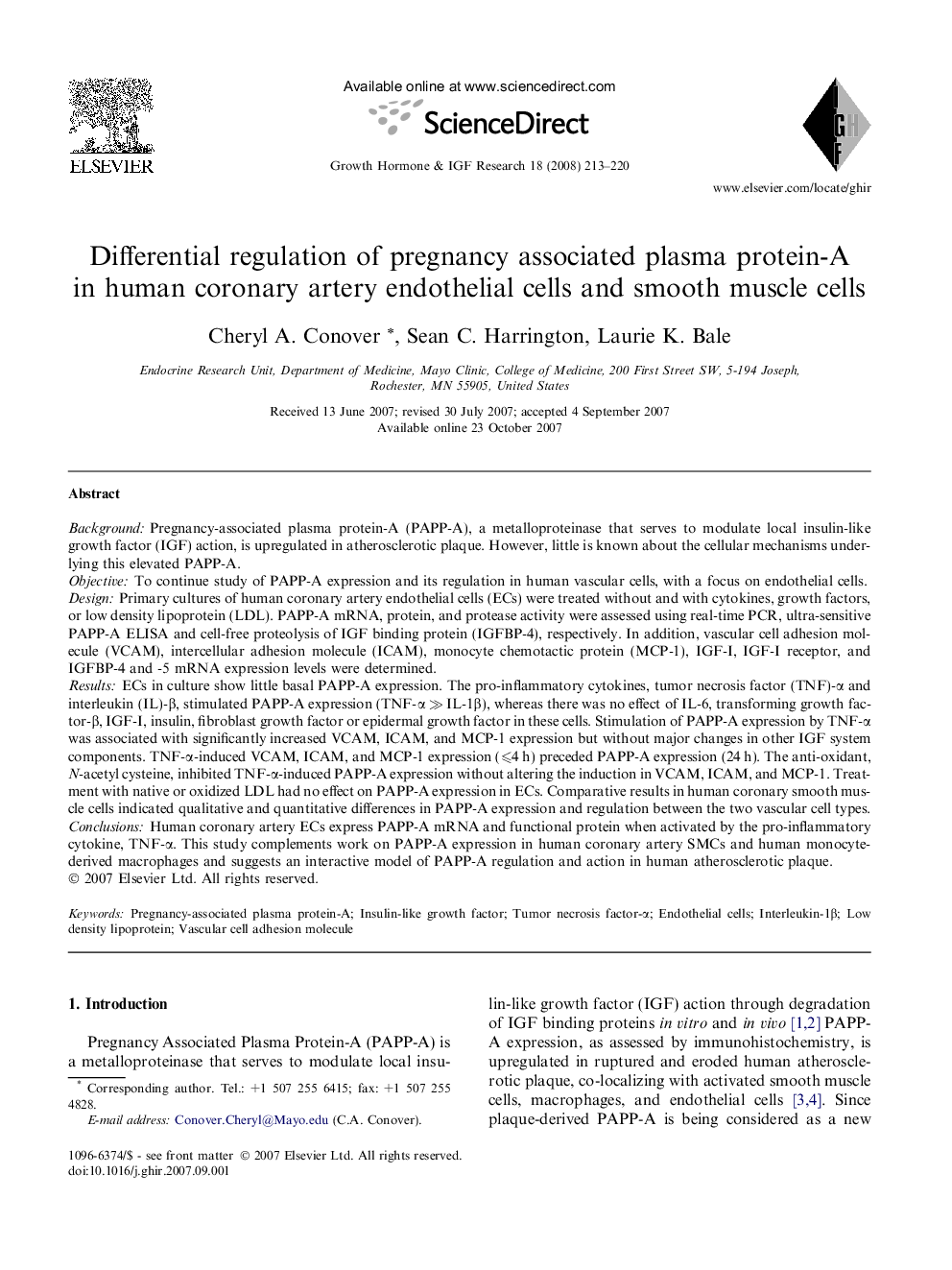| Article ID | Journal | Published Year | Pages | File Type |
|---|---|---|---|---|
| 2803340 | Growth Hormone & IGF Research | 2008 | 8 Pages |
BackgroundPregnancy-associated plasma protein-A (PAPP-A), a metalloproteinase that serves to modulate local insulin-like growth factor (IGF) action, is upregulated in atherosclerotic plaque. However, little is known about the cellular mechanisms underlying this elevated PAPP-A.ObjectiveTo continue study of PAPP-A expression and its regulation in human vascular cells, with a focus on endothelial cells.DesignPrimary cultures of human coronary artery endothelial cells (ECs) were treated without and with cytokines, growth factors, or low density lipoprotein (LDL). PAPP-A mRNA, protein, and protease activity were assessed using real-time PCR, ultra-sensitive PAPP-A ELISA and cell-free proteolysis of IGF binding protein (IGFBP-4), respectively. In addition, vascular cell adhesion molecule (VCAM), intercellular adhesion molecule (ICAM), monocyte chemotactic protein (MCP-1), IGF-I, IGF-I receptor, and IGFBP-4 and -5 mRNA expression levels were determined.ResultsECs in culture show little basal PAPP-A expression. The pro-inflammatory cytokines, tumor necrosis factor (TNF)-α and interleukin (IL)-β, stimulated PAPP-A expression (TNF-α ≫ IL-1β), whereas there was no effect of IL-6, transforming growth factor-β, IGF-I, insulin, fibroblast growth factor or epidermal growth factor in these cells. Stimulation of PAPP-A expression by TNF-α was associated with significantly increased VCAM, ICAM, and MCP-1 expression but without major changes in other IGF system components. TNF-α-induced VCAM, ICAM, and MCP-1 expression (⩽4 h) preceded PAPP-A expression (24 h). The anti-oxidant, N-acetyl cysteine, inhibited TNF-α-induced PAPP-A expression without altering the induction in VCAM, ICAM, and MCP-1. Treatment with native or oxidized LDL had no effect on PAPP-A expression in ECs. Comparative results in human coronary smooth muscle cells indicated qualitative and quantitative differences in PAPP-A expression and regulation between the two vascular cell types.ConclusionsHuman coronary artery ECs express PAPP-A mRNA and functional protein when activated by the pro-inflammatory cytokine, TNF-α. This study complements work on PAPP-A expression in human coronary artery SMCs and human monocyte-derived macrophages and suggests an interactive model of PAPP-A regulation and action in human atherosclerotic plaque.
